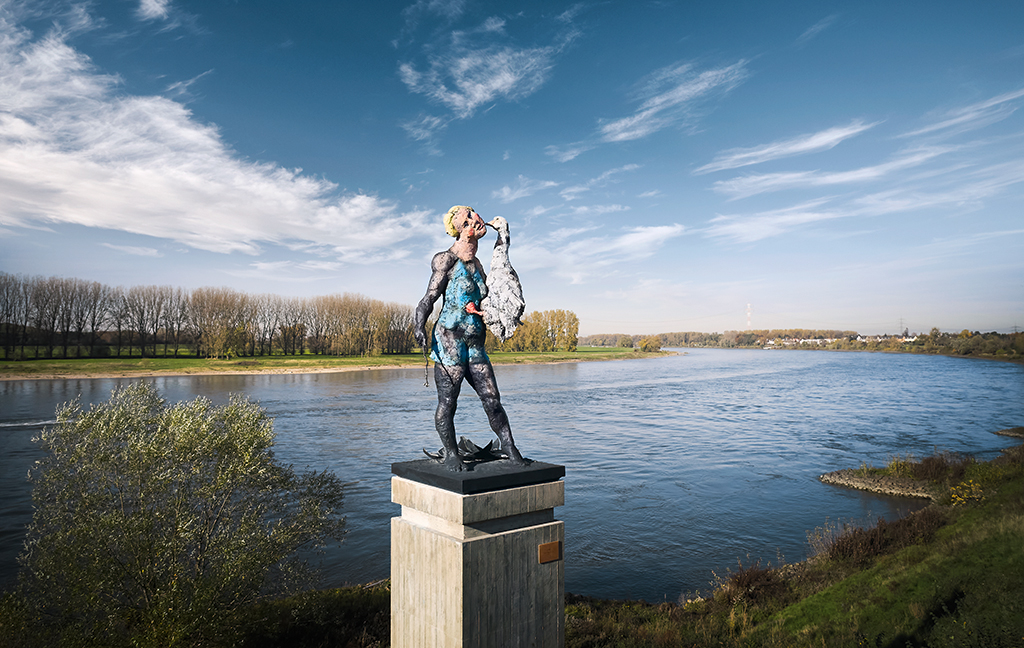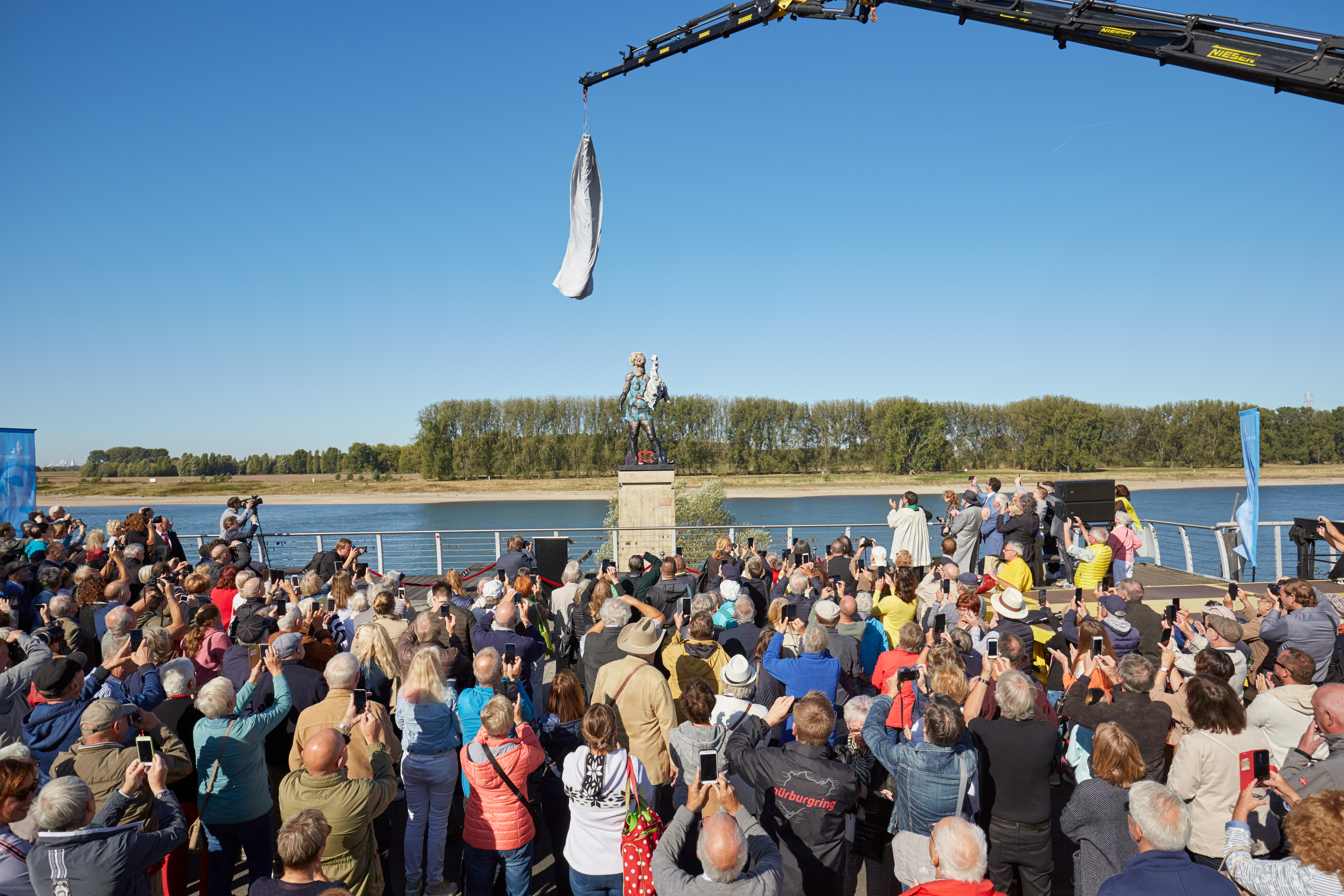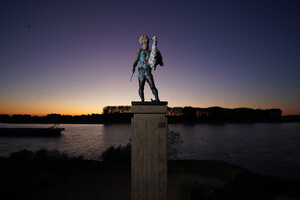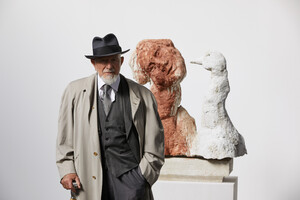Born in Liberec (German: Reichenberg) in the Czech Republic in 1941.
1948 Relocated to Rheydt, Germany
1962 Moved to West Berlin; lived and worked in Karlsruhe and Mönchengladbach, among other places.
1956–1961 Studied at the Werkkunstschule Krefeld under Laurens Goossens
Early 1960s: study visit to Maria Laach monastery; studied at the Kunstakademie Düsseldorf
Awards
1970 Villa Romana Prize
1971 Award of the German Critics' Association
1990 Lovis Corinth Prize
2006 Honorary doctorate from the Kunstakademie Breslau/Eugeniusz Geppert Academy of Fine Arts in Wroclaw, Poland
since 2009 Full member of the North Rhine-Westphalian Academy of Sciences and Arts
2013 International Mendelssohn Prize Leipzig
2016 Honorary Citizen of Liberec/Čestný občan města Liberce, Czech Republic
Teaching work
1976–1986 Professor at the State Academy of Fine Arts Karlsruhe
ab 1986 Professor at the Kunstakademie Düsseldorf
1988–2009 Rector of the Kunstakademie Düsseldorf
Group exhibitions (selection)
1969 “14 x 14,” State Art Gallery Baden-Baden
1977 “documenta 6,” Kassel
1981 “A New Spirit in Painting,” Royal Academy of Arts, London
1982 “documenta 7,” Kassel
1982 “Zeitgeist,” Martin-Gropius-Bau, Berlin
1983 “17th São Paulo Biennial”
1984 “von hier aus,” exhibition center, Düsseldorf
1985 “German Art in the 20th Century,” Royal Academy of Arts, London
1989 “Bilderstrei,” Museum Ludwig/Rheinhallen, Cologne
1997 “Deutschlandbilder,” Martin-Gropius-Bau, Berlin
2009 “Art of Two Germanys/Cold War Cultures”, The Los Angeles County Museum of Arts
2013 “Artzuid,” Amsterdam
2014 “Germany divided,” British Museum, London
2016 “Baselitz, Lüpertz, Penck, Immendorff,” Gemeentemuseum, Den Haag
2017 “Deutschland 8 – Deutsche Kunst in China”, Tai Miao Tempel/Forbidden City, Beijing
Solo exhibitions (selection)
1965 Galerie Großgörschen 35, West Berlin
1969 Galerie Hake, Cologne
1973 State Art Gallery Baden-Baden
1974 Galerie Michael Werner, Cologne
1976 Galerie Rudolf Zwirner, Cologne
1977 Hamburg Art Gallery, Hamburg
1979 Whitechapel Art Gallery, London
1979 Josef Haubrich Art Gallery, Cologne
1981 Marian Goodman Gallery, New York City
1983 Stedelijk Van Abbemuseum, Eindhoven
1983 Kestner Gesellschaft, Hanover
1984 Vienna Secession, Vienna
1986 Municipal Gallery in the Lenbachhaus, Munich
1987 Museum Boijmans -van Beuningen, Rotterdam
1991 Centro de Arte Reina Sofia, Madrid
1994 Museum of Modern Art Ludwig Foundation, Vienna
1995 Museion, Bozen
1996 Kunstverein Nordrhein-Westfalen, Düsseldorf
1999 Zollverein Coal Mine Industrial Complex, Essen
2002 Museum Würth, Künzelsau
2006 BA-CA Kunstforum art museum and gallery, Vienna
2009 Art and Exhibition Hall of the Federal Republic of Germany, Bonn
2010 Art Forum East German Gallery, Regensburg
2011 Gemeentemuseum, Den Haag
2014 Museo de Bellas Artes de Bilbao
2014 Hermitage Museum, Saint Petersburg
2015 Musée d'Art Moderne de la Ville de Paris
2017 Hirshhorn Museum, Washington
2019 Haus der Kunst, Munich
Selected literature
Zweite, Armin (Hg.), Markus Lüpertz. Gemälde – Skulpturen, Ostfildern-Ruit 1996, ISBN 978-3-89322-839-3
Gohr, Siegfried, Markus Lüpertz, Köln 2002, ISBN 978-3-8321-7000-4
Fleck, Robert (Hg.), Markus Lüpertz. Hauptwege und Nebenwege; eine Retrospektive, Bilder und Skulpturen von 1963 bis 2009, Köln 2009, ISBN 978-3-940953-22-3
More information
Markus Lüpertz on ![externer Link [extern]](https://www.monheim.de/typo3conf/ext/website_template/Resources/Public//Images/external-link.png) NRWskulptur
NRWskulptur













![externer Link [extern]](https://www.monheim.de/typo3conf/ext/website_template/Resources/Public//Images/external-link.png)


